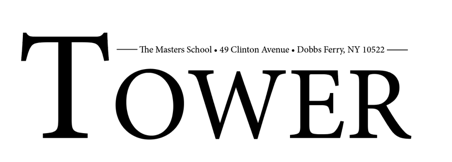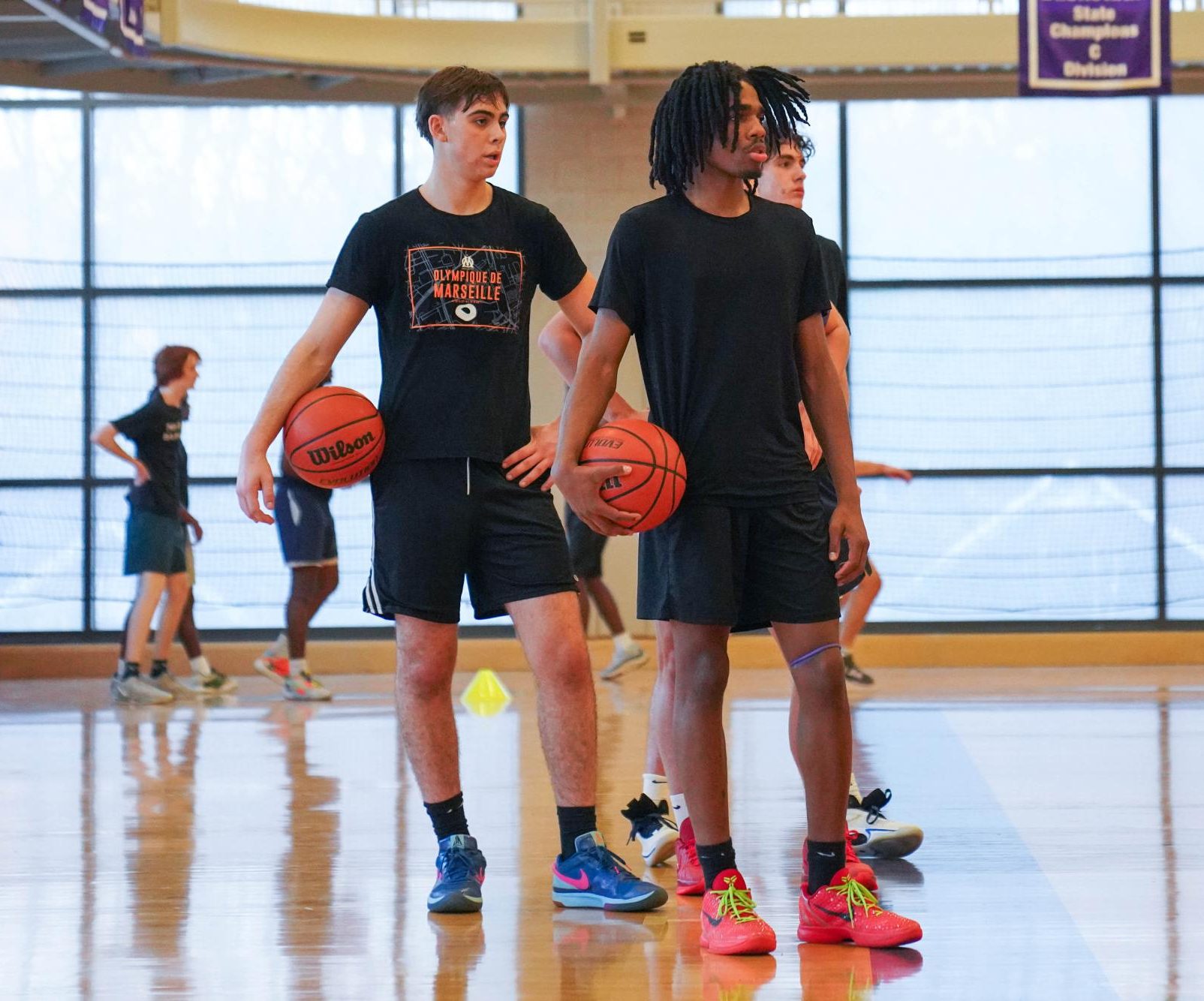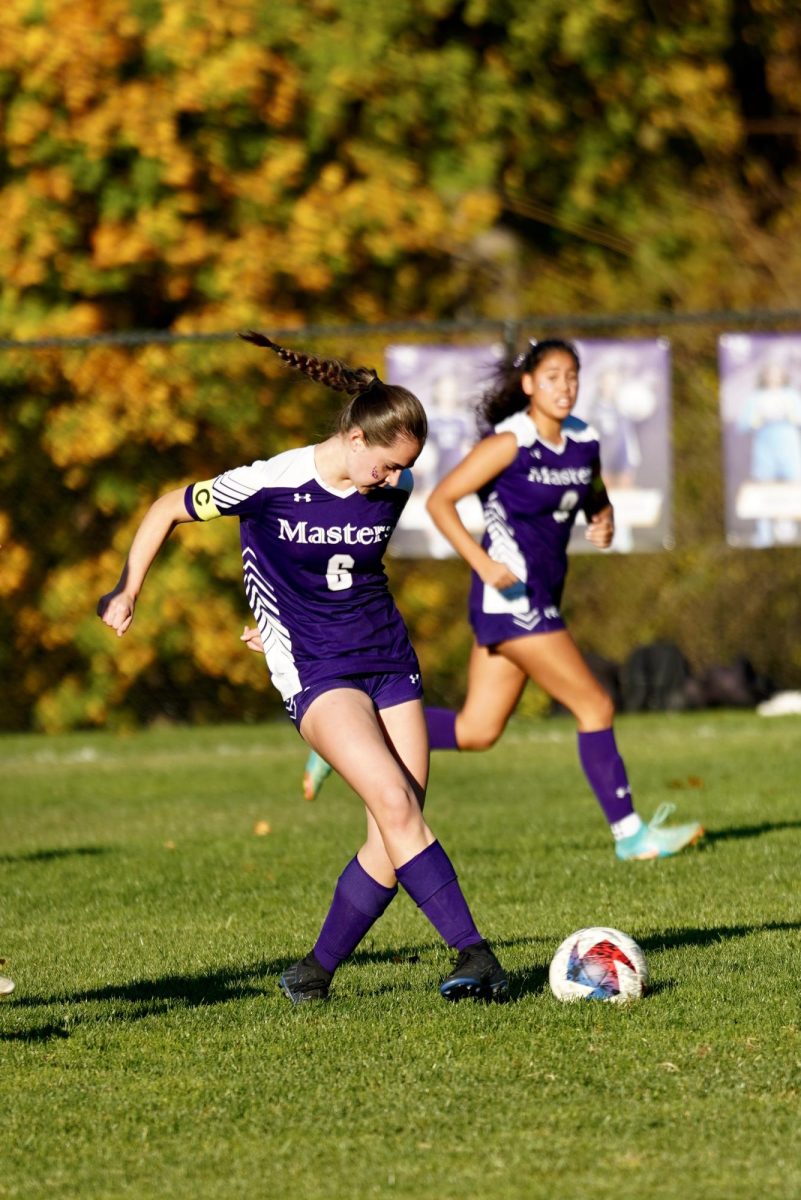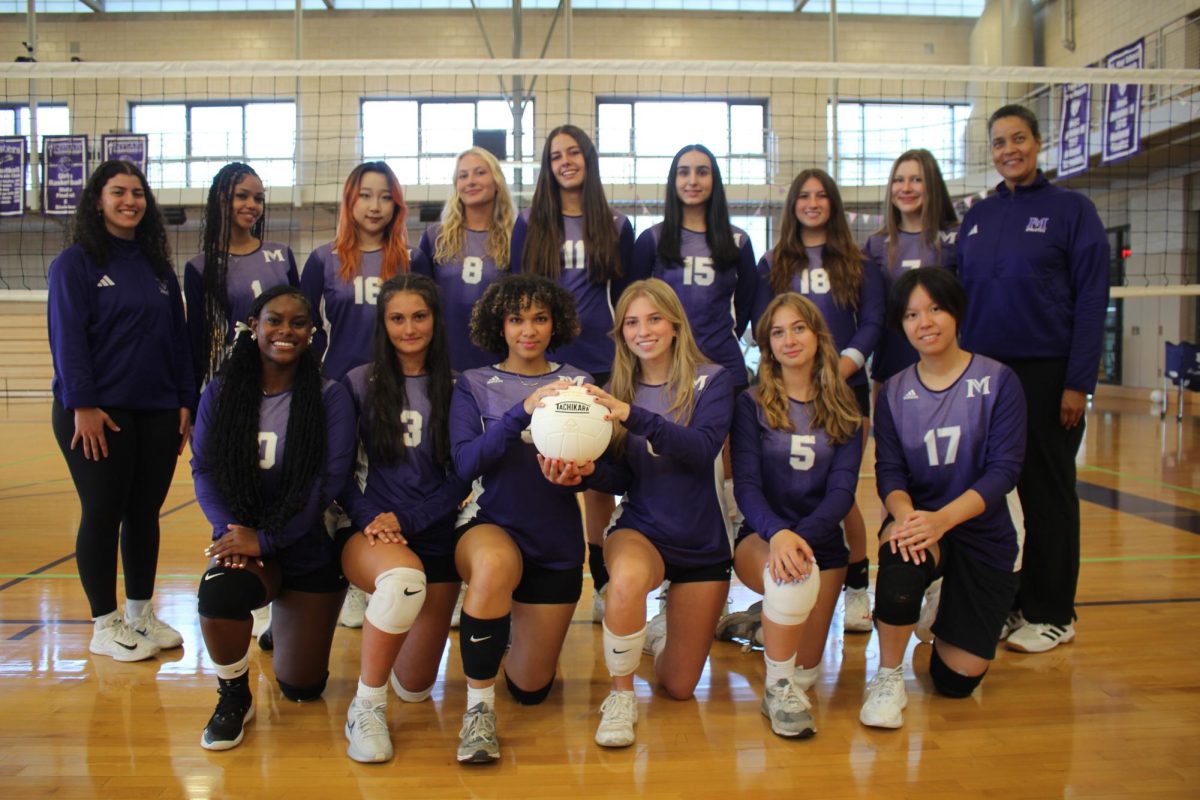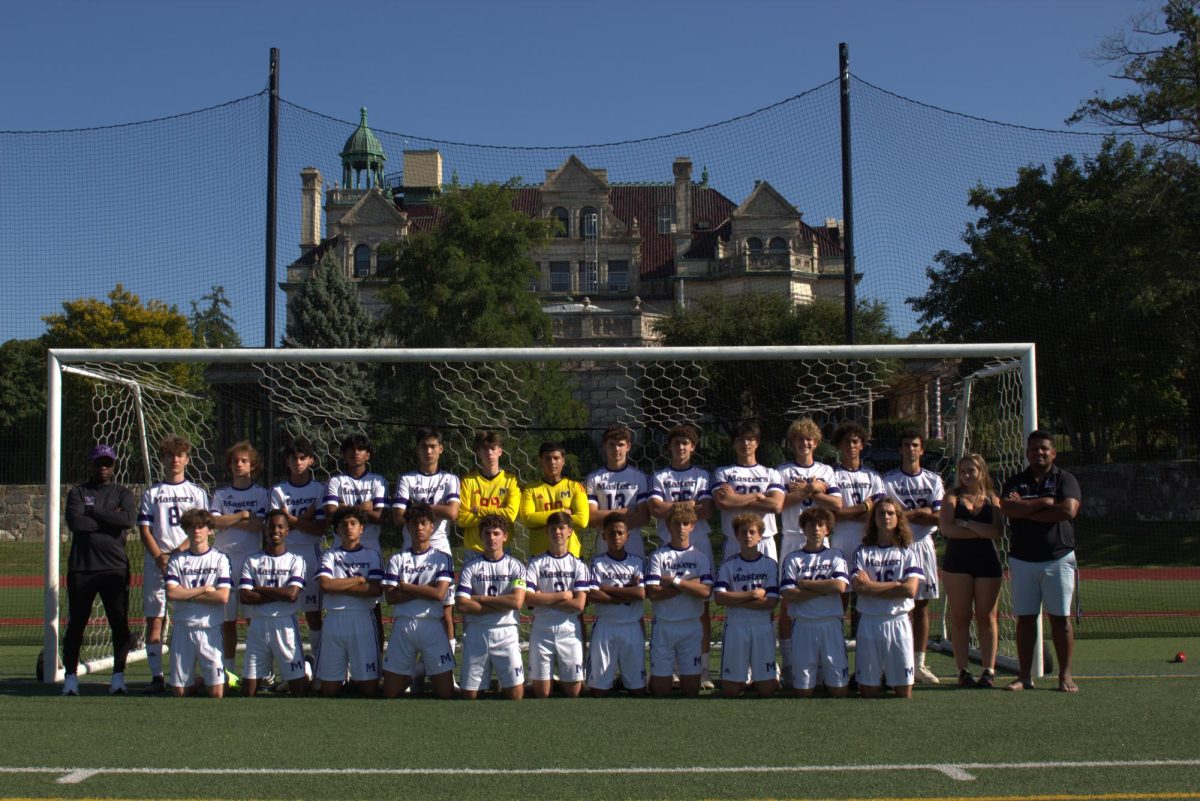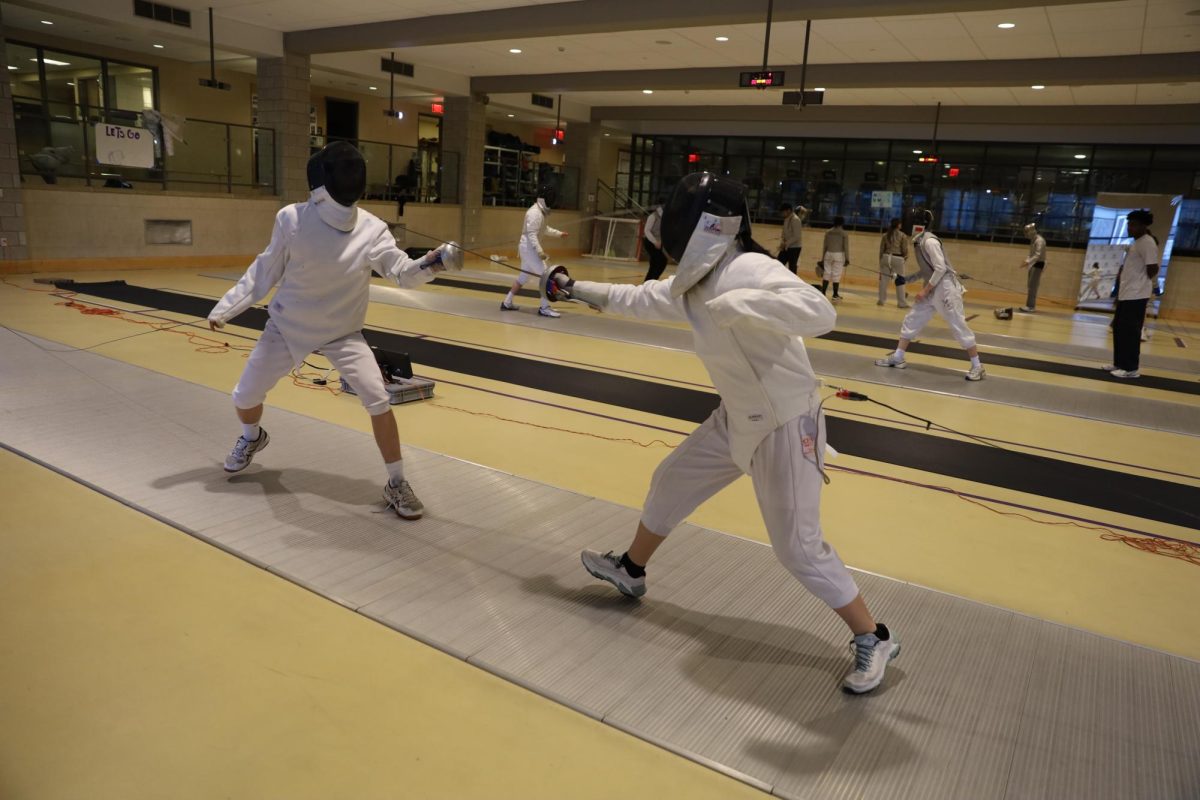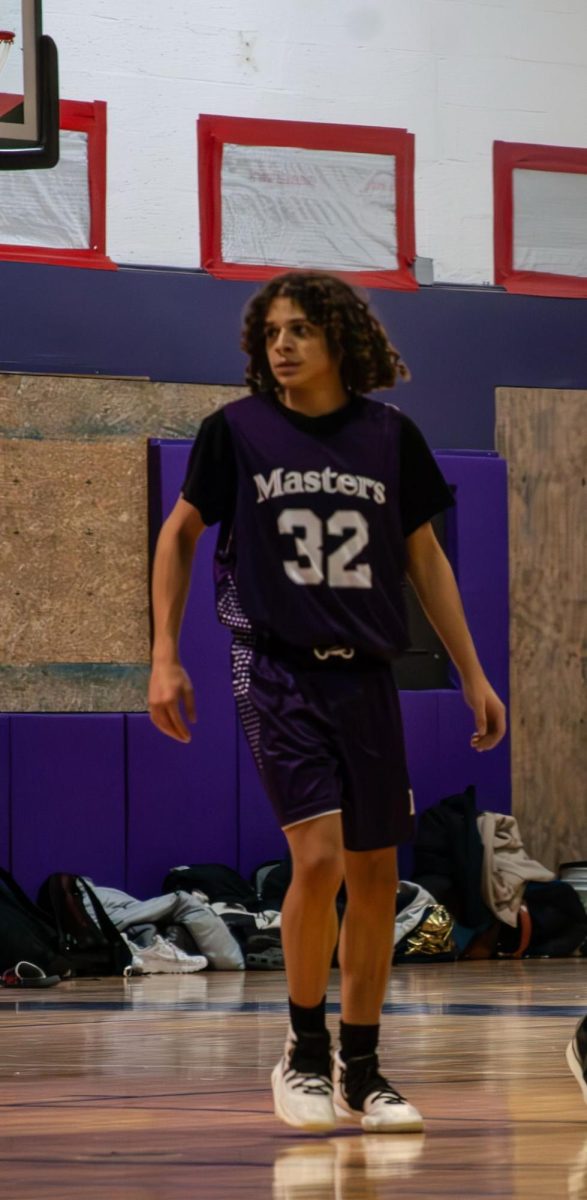During the 2023-24 Winter season, the Masters boys varsity basketball team had one of their best years yet: they made it to the semifinals of FAA and sent a star player to play at Bowdoin College, all while having a strong, supportive culture. So, this year, when a swath of basketball players joined the Masters community – known by much of the student body as recruits – it came as no surprise.
Although the flood of basketball players may be deceiving, the admissions and athletic departments do not have an official recruiting program.
At the collegiate level, recruiting usually involves offering student-athletes a standardized scholarship in exchange for their joining a team. This practice is not echoed in Masters admissions.
According to The Associate Director of Boarding Admissions, Jack Stevens, Masters exclusively provides need-based financial aid – not merit-based scholarships – meaning there are no athletic scholarships akin to those in higher education for students to play sports for Masters.
“College and higher education is a little bit different, because colleges and universities have the ability to assign loans as part of a financial aid package. If we’re talking about division one athletics, as opposed to two and three, we’re talking about scholarship money that is actually allocated specifically to that particular talent pool that doesn’t exist on the high school side,” Adam Gimple, director of college counseling, said.
So, why the misconception?
Well, for starters, both high schools and colleges demand consistent levels of academic excellence across all their accepted applicants – even student-athletes.
“First and foremost, if a student doesn’t have the academic chops, they’re simply not going to be admitted to a school,” Gimple said.
“[Being a skilled athlete] doesn’t affect our academic standards or admission standards. It’s really important that these students who are going to be high-impact athletes are also going to be high-impact classroom students and high-impact community citizens,” Stevens said.
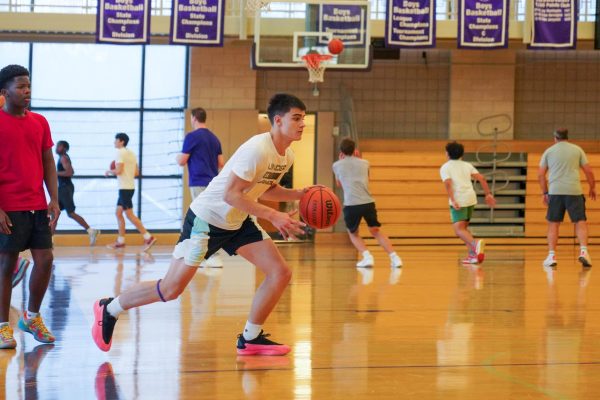
When student-athletes apply to Masters, they can fill out a prospective student-athlete form. Created last year, this form goes directly to the admissions office. An optional general inquiry form, which includes an area for students to highlight their specific interests, is also included prior to formal application. Then, the admissions team puts students in touch with coaches who head their respective sport.
“It’s not necessarily recruiting…but, I’m having conversations with all types of athletes and connecting them with coaches on campus,” Stevens said. He explained that this part of the admissions process helps prospective students become part of the Masters community.
“As Masters continues to have its own institutional priorities of growing specific programs, whether that’s the IEC programming, or if it’s our visual and performing arts programming, or if it’s athletics programming, there are always opportunities for schools like Masters to go out into the market and say, ‘we want to build this program, so we want to try and find students who have talents and capabilities to contribute to this program’.” Gimple said.
Stevens and the head coach of the boys varsity basketball team attribute the arrival of several players to the team’s improvement, strong leadership and welcoming culture.
“[The influx of student-athletes] is a result of the product. You know, when people hear good things about a program, they want to join it. And Coach Kuhl has built a program that kids want to be a part of,” Stevens said.
Head coach, Joey Kuhl, noted the team’s significant success in recent years and celebrated the team’s energy under senior leadership.
“People like what they see when they look at our program, and that’s really a testament to the players. The seniors from two years ago and last year really did a great job setting a culture, and it’s a fun but serious team to be on, which I think is what most people are looking for,” Kuhl said.
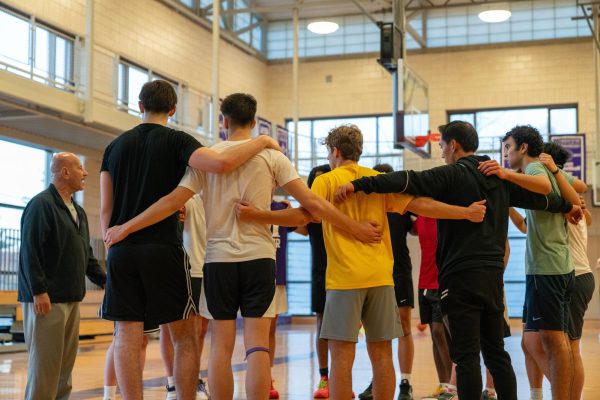
This year the team has been working hard in the off season, with weight room sessions, 4v4 drills, morning practices and runs. One of the new players, Veljko Stanic ‘26, compared the basketball program at Masters to ones he has previously been a part of.
“Completely [different]. In Serbia, it’s clubs, nothing to do with school. And here, it’s school activities, so it’s more fun.” He continued, “I’ve gotten better at the game. I’ve also learned that knowing people around you, the people you play with, helps on the court.”
Although Masters doesn’t have a fully fledged recruiting regime, the basketball program has grown and is working towards the upcoming season.
Gimple said, “If they have the ability to be academically successful here, they’re mission-aligned in terms of who they are personally, and they happen to possess a talent related to a program that we want to grow, that is fantastic for everybody.”


